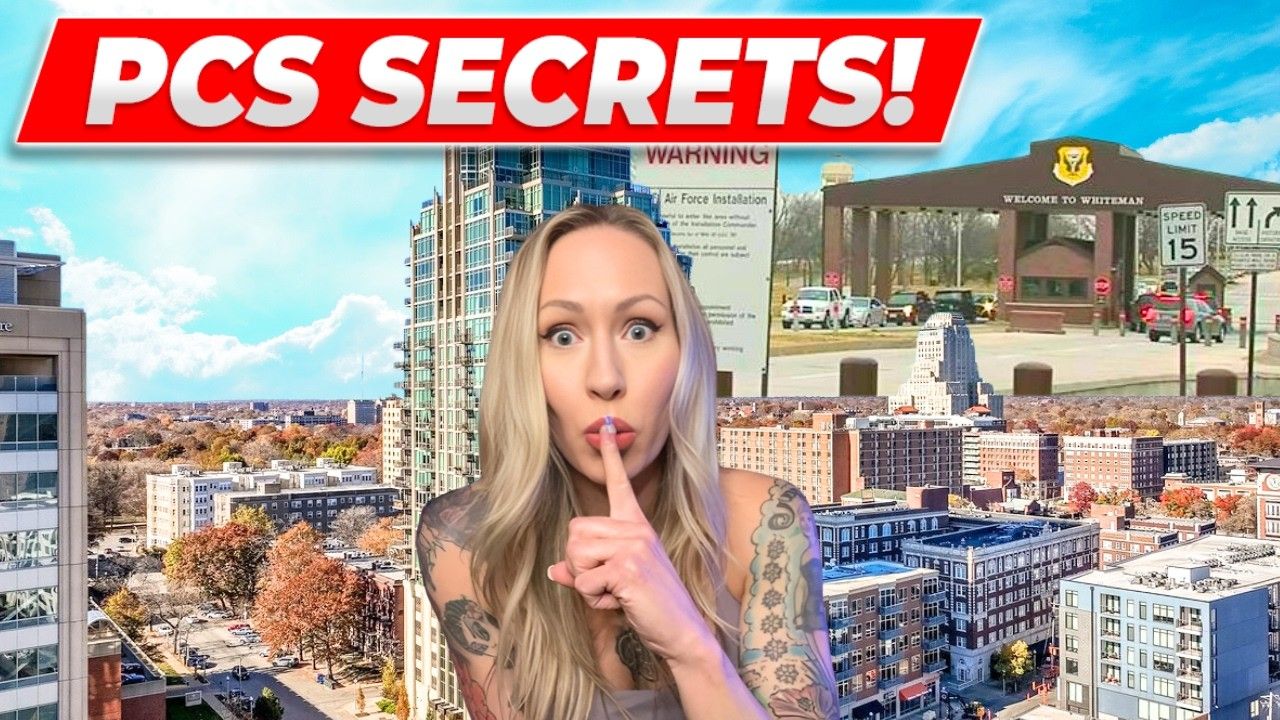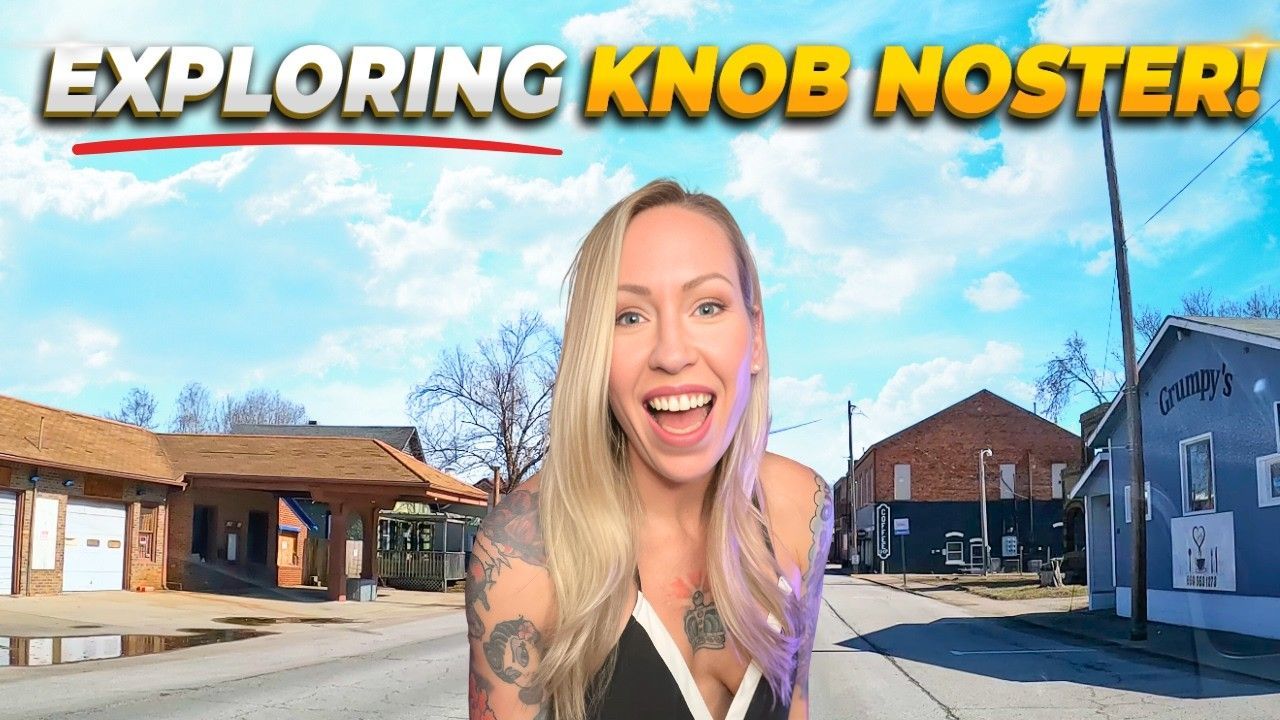Missouri History: The Wild Side — 10 Weird, Wonderful, and True Facts About the Show-Me State
Welcome to Warrensburg Missouri, and if you've ever wondered about Missouri history beyond the textbooks, you’re in the right place. We made a short video talking about some of the strangest, most fascinating bits of Missouri history and local lore, and this article expands on those stories with added context, background, and a few laughs. Whether you’re moving to Missouri, passing through, or just curious, these ten facts reveal a side of Missouri history that’s equal parts quirky, surprising, and deeply American.
Table of Contents
- Introduction
- Fact 10 — Missouri Was Named After a Native Tribe
- Fact 9 — “The Show Me State” Has a Literal Backstory
- Fact 8 — The Missouri River is the Longest River in the United States
- Fact 7 — Missouri Has a State Dinosaur (a Hadrosaur)
- Fact 6 — The Missouri State Capitol Was Burned and Rebuilt Multiple Times
- Fact 5 — The “missour” vs. “missouri” Pronunciation Debate
- Fact 4 — The Dot Battle With the KKK: How a Highway Name Served Justice
- Fact 3 — Missouri Hosted the Olympics (Sort of): The 1904 St. Louis Games
- Fact 2 — The Waffle Cone Was Popularized at the 1904 St. Louis World’s Fair
- Fact 1 — The New Madrid Earthquakes: When the Mississippi Flowed Backward
- Why These Ten Facts Matter in the Bigger Picture of Missouri History
- Moving to Missouri? A Few Practical Notes
- Fun Side Notes and Curiosities From Missouri History
- FAQs About Missouri History
- Closing Thoughts: Missouri History — Surprising, Stubborn, and Unforgettable
Introduction
Missouri history is full of big rivers, bigger personalities, and events that range from the quietly local to the nationally consequential. In this guide we’ll walk through ten of the weirdest — and often overlooked — facts about Missouri history. We’ll cover tribal origins, state nicknames, record-setting rivers, dinosaur pride, fires and rebuilds, pronunciation debates, a DOT ✔️ civil-rights mic drop, Olympics flubs, dessert inventions, and earthquakes that literally changed the landscape.
Fact 10 — Missouri Was Named After a Native Tribe
One of the oldest threads in Missouri history starts with the people who lived here long before state lines: the Missouria (often pronounced "Missour-ee-uh" or "Missour-ia" depending on the source). The name “Missouri” itself is derived from the name of that tribe — essentially “those who dug the canoes” in one of the Algonquian languages or interpreted by French explorers. The Missouria were part of a larger set of tribes that migrated southward from the Great Lakes region centuries ago.
When we talk about Missouri history, it’s important to start here — the land’s identity was shaped long before U.S. statehood. The Missouria people left archaeological traces (arrowheads and artifacts) across family lands and river valleys; if you’ve grown up hunting for arrowheads in Missouri, you’ve literally touched a piece of that deeper history.
Fact 9 — “The Show Me State” Has a Literal Backstory

Missouri’s famous nickname, “The Show Me State,” comes from a quote attributed to U.S. Congressman Willard Duncan Vandiver in 1899: “I’m from Missouri. You have got to show me.” Over time, that terse challenge became shorthand for a Missourian take on skepticism and practicality: don’t just tell us — show us. That’s a recurring theme through Missouri history: a mix of plainspoken practical thinking, some Midwestern stubbornness, and a readiness to test the claim.
This phrase shows up in everything from tourism messaging to prideful one-liners. If you arrive in Missouri with big claims, bring proof — the state’s attitude is to verify, not to buy the hype without a demonstration.
Fact 8 — The Missouri River is the Longest River in the United States
Here’s a fun twist in Missouri history: by measured length, the Missouri River clocks in at about 2,341 miles — one mile longer than the Mississippi River. That length makes it the longest river in the continental United States. The Missouri winds through plains, cuts past historic towns, and has been a lifeline for trade, transport, and exploration for hundreds of years.

One of the best ways to experience Missouri history is to get on the water. Floating, kayaking, and canoe trips are a quintessential Missouri pastime — whether you’re packing a cooler and a group of friends or paddling with the family. Missouri’s river culture — from riverboats in the 1800s to modern recreational float trips — is a continuous thread through the state’s story.
Fact 7 — Missouri Has a State Dinosaur (a Hadrosaur)
Yes — Missouri has an official state dinosaur. In the video we called it the “hydrosaurus” (an informal mis-heard version of “hadrosaur”), but the key point is: the state celebrates prehistoric finds. The hadrosaur family are the duck-billed dinosaurs, and fossils found in Missouri reflect a deep geological history that goes far back before human Missouri history.
State dinosaurs are a fun way to connect modern residents (especially kids and students) to the ancient natural history underfoot. Remember that Missouri history isn’t only human; it includes fossil records, glacial impacts, and ancient ecosystems that still fascinate paleontologists today.
Fact 6 — The Missouri State Capitol Was Burned and Rebuilt Multiple Times
Jefferson City’s capitol has a dramatic history. Over the decades, the state capital was reconstructed more than once. Fires, including one caused by lightning, destroyed sections of early capitol buildings and necessitated rebuilds — meaning the current building is the product of resilience and repeated reconstruction. That cycle of destruction and rebuilding is part of Missouri history’s architectural narrative.
The capital’s story is a reminder that state institutions are living things — they can be damaged, revised, and reborn. Each reconstruction brought new design choices, fresh symbolism, and artifacts rescued from the past.
Fact 5 — The “missour” vs. “missouri” Pronunciation Debate

If you live here, or plan to, brace yourself for a pronunciation debate that can trigger friendly (or not-so-friendly) fire. Is it “Missour-EE” or “Missour-AH”? Both are used. Locally, older generations often drop the final syllable (“Missour”), while others say the full “Missouri.” Linguistically, both variants exist and are acceptable.
This tiny pronunciation war is part of Missouri history’s living culture — accents, regional phrases, and vocabulary differences are all part of how residents express identity. If you move here, you’ll quickly be able to tell where someone’s from by the way they say the state’s name.
Fact 4 — The DOT Battle With the Kkk: How a Highway Name Served Justice
This is one of those Missouri history stories that feels like cinematic comeuppance. In the early 2000s, the KKK applied to be part of an “Adopt-a-Highway” program — literally the civic program where groups pick up trash along a stretch of roadway and get a sign recognizing their contribution. Public backlash led to legal battles about free speech and participation in public programs; the courts ultimately recognized the group’s right to participate.
Missouri’s Department of Transportation (MoDOT) used a brilliant counter: they renamed the adopted stretch of road the “Rosa Parks Freeway” (or Rosa Parks Highway), placing the KKK’s sign on a road now named after a civil rights icon. The image of hate-group signage under the banner of Rosa Parks became a national talking point — the DOT rewrote the sign’s context in an unforgettable way. That creative response is a proud, if unconventional, episode in Missouri history.
Eventually the group stopped maintaining the section and their adoption was revoked, but the story stands as an example of civic sleight-of-hand that used irony and symbolism to respond to intolerance. It’s an unusual chapter in the legal and cultural history of Missouri.
Fact 3 — Missouri Hosted the Olympics (Sort of): The 1904 St. Louis Games

Missouri history includes an Olympic footnote: the 1904 Summer Olympics were held in St. Louis, Missouri — the first Olympics hosted in the United States. But these were far from the smooth, carefully choreographed Games we imagine today. The 1904 Olympics were overshadowed by the Louisiana Purchase Exposition (the World’s Fair), and many events were small, disorganized, or poorly attended compared with modern standards.
One iconic story is that of George Eyser, a German-American gymnast who competed with a wooden leg and won multiple medals — a genuinely remarkable tale of grit and athleticism. But the 1904 Games were chaotic: some competitions were staged as sideshows to the fair, and international attendance suffered. Still, hosting the Olympics put Missouri on the global map for sport and spectacle — even if the message was, sometimes, “show me” rather than “tell me.”
Fact 2 — The Waffle Cone Was Popularized at the 1904 St. Louis World’s Fair

Here’s a sweet entry in Missouri history: the modern ice cream waffle cone has a popular origin story tied to the 1904 St. Louis World's Fair. The often-repeated tale goes: an ice cream vendor ran out of cups/containers, and his neighbor — a waffle or pastry seller named Ernest Hamwi (a Syrian immigrant) — rolled a warm waffle into a cone shape to hold ice cream. The invention stuck. Whether every detail is apocryphal or not, the World's Fair did popularize many food items and novelty inventions that became American mainstays.
For food lovers, that’s a delicious line in the margins of Missouri history — a reminder that even small innovations (a pragmatic rolled waffle) can become globally beloved traditions (cone + ice cream = childhood joy).
Fact 1 — The New Madrid Earthquakes: When the Mississippi Flowed Backward
Arguably the most dramatic natural event in Missouri history wasn’t recent: the 1811–1812 New Madrid earthquakes. These quakes, centered in the New Madrid seismic zone (near the Mississippi River, affecting portions of modern Missouri, Tennessee, Kentucky, and beyond), were so powerful that eyewitness reports describe the Mississippi River’s surface boiling, whirlpools forming, and — famously — the river flowing backward for hours. Several aftershocks were among the largest felt in North America, and new lakes were formed — Reelfoot Lake in Tennessee is a well-known example.
Contemporary magnitude estimates vary, but we can safely say this was a major seismic event in Missouri history. Churches rang in Boston, masonry crumbled in Cincinnati, and islands used by river pirates permanently disappeared in some cases. The quakes left a geographic and cultural legacy: they changed the Mississippi’s islands, created lakes, and set a precedent for living with seismic risk in a region not typically associated with earthquakes.

Why These Ten Facts Matter in the Bigger Picture of Missouri History
When we talk about Missouri history, it’s tempting to rely on the usual headlines — statehood, westward expansion, or Civil War scuffles. But the everyday, the strange, and the overlooked often tell the most vivid stories. Missouri history is a tapestry of native cultures, immigrant ingenuity, river commerce, surprising natural events, and people who challenged expectations. From state dinosaurs to waffle cones, the list above shows you the diversity of experiences and episodes that make Missouri what it is.
Moving to Missouri? A Few Practical Notes
If you’re relocating to Warrenburg, Whiteman AFB, or anywhere in Missouri, the historical context helps you fit in. Missouri history influences local festivals, commemorations, museums, and even the odd nickname on a road sign. Here are quick, practical tips for new residents:
- Explore local museums — many towns keep unique collections tied to Missouri history like World's Fair memorabilia or New Madrid quake displays.
- Try a float trip — it’s a regional rite of passage tied to river culture; many towns offer outfitters for day floats.
- Learn local pronunciations and customs — folks love to chat about Missouri history and debate small-town lore.
- When touring older homes — ask about foundations and construction: historic rebuilds often explain quirky layouts or mismatched architectural quirks.
Fun Side Notes and Curiosities From Missouri History
While researching these ten facts about Missouri history, we fell into a few delightful rabbit holes: river pirates (yes, Missouri had them!), forgotten food origin stories, and the many ways Missourians say “hello” — from the plainspoken to the proudly eccentric. A few small curiosities we recommend checking out in person:
- Historic river towns with museums about steamboats and river pirates.
- Reelfoot Lake and other bodies of water created or altered by seismic events.
- Sites and memorials connected to the 1904 World's Fair in St. Louis.
- Local fossil displays and parks featuring Missouri’s prehistoric finds.
FAQs About Missouri History
Is the Missouri River really longer than the Mississippi?
Yes — when measured from the headwaters often attributed to the Missouri’s source, the Missouri River is listed at approximately 2,341 miles, slightly longer than the generally accepted length of the Mississippi River. How one measures rivers can vary, and some measurements treat the Missouri + Mississippi as a single system, but for straightforward ranking, the Missouri holds the top spot in the continental U.S.
What’s the “official” state dinosaur of Missouri?
Missouri celebrates a hadrosaur-type dinosaur in state-level interest and educational displays. State dinosaur designations are often chosen for educational outreach and paleontological pride. If you’re a fossil fan, look for local museum displays that highlight Missouri’s prehistoric finds.
Did the KKK really adopt a highway in Missouri, and did DOT rename it Rosa Parks Highway?
It's true that a Klan chapter participated in an adopt-a-highway program and that legal and public battles followed. The Missouri Department of Transportation used naming and signage (including applying the Rosa Parks name) to underscore the irony and challenge the optics of hate-group recognition. The episode is an unusual but well-documented part of modern Missouri history, illustrating how communities and agencies respond to difficult civic situations.
Did Missouri host the very first Olympics?
The 1904 Summer Olympics in St. Louis were the first to be held in the United States. They were held alongside the St. Louis World's Fair, which complicated organization and attendance. While not the best-run Olympics, they remain a historic milestone in Missouri history.
Are earthquakes common in Missouri?
Most of Missouri doesn’t experience frequent, large earthquakes, but the New Madrid Seismic Zone (in the Bootheel region) is historically significant and capable of producing large quakes. The 1811–1812 New Madrid earthquakes are the most famous example; they caused dramatic, long-lasting landscape changes. Modern-era infrastructure is designed with this seismic history in mind.
Why is the pronunciation of “Missouri” such a thing?
Pronunciation reflects regional dialects and cultural identity. Some folks say two syllables (Missouri), others one (Missour). Both are used in Missouri and across the United States. The debate is light-hearted pride for many locals and a conversation starter for newcomers.
Where can I learn more about Missouri history?
Start local. Small-town museums, the State Historical Society of Missouri, county historical societies, and exhibits at place-based museums (like the Missouri History Museum in St. Louis) are excellent. Field visits to river towns, Reelfoot Lake, and sites linked to the 1904 World's Fair bring Missouri history to life more vividly than any book.
Closing Thoughts: Missouri History — Surprising, Stubborn, and Unforgettable
From the Missouria tribe that lent the state its name, to the river pirates and monstrous earthquakes that shaped the land, Missouri history is a patchwork of resilience, irony, and everyday invention. Whether you’re drawn to paleontology, civil-rights-era symbolism, culinary lore, or natural disasters, Missouri’s story has something surprising around every bend of the river.
If you’re moving to Missouri — especially to Warrensburg or near Whiteman AFB — we love helping newcomers learn the little things that make transitioning easier. Call or text us at 660.628.2793, ask questions, and let Missouri history be part of your new hometown orientation. There’s always more to discover here — and we enjoy every dig into the past.

Eva Norton
Your trusted real estate partner, specializing in a comprehensive range of services from family relocations to high-return investment properties, is here to guide you every step of the way. As a top-producing agent in Warrensburg, MO, I take pride in my track record of excellence, having earned the prestigious “Elite Agent” title for three consecutive years with REAL Broker LLC.
660.628.2793







